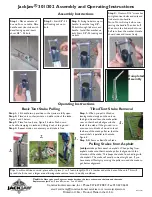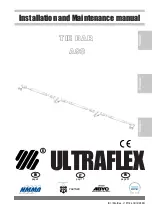Reviews:
No comments
Related manuals for V2 4x4x4 LED Cube Kit

X Series
Brand: ZOLL Pages: 344

C571-AC
Brand: ABB Pages: 9

2101
Brand: Hagie Pages: 61

301
Brand: JackJaw Pages: 2

MicroVersaTrip Plus
Brand: GE Pages: 20

b30
Brand: GE Pages: 252

Duet
Brand: Balanced Body Pages: 12

EL Series
Brand: Eagle Pro Pages: 6

EntelliGuard G
Brand: GE Pages: 10

CT-2000
Brand: Cannon Pages: 40

H3
Brand: NARGESA Pages: 34

RTC1000
Brand: R&S Pages: 371

06206
Brand: R.M. Young Pages: 9

BeamLine VL800
Brand: Vari Lite Pages: 14

VANGUARD 1X
Brand: Vaniman Pages: 3

A98
Brand: Ultraflex Pages: 52

80421
Brand: Palmgren Pages: 12

54172
Brand: JBM Pages: 13

























